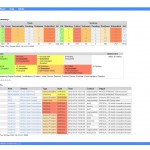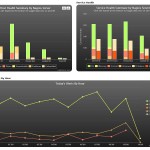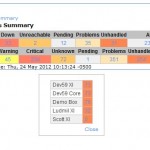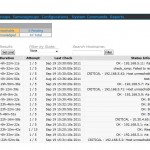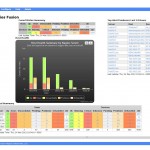
Need a simpler solution for scaling Nagios? Distributed monitoring environments often contain several Nagios servers in order to cover multiple geographic or network locations, or sometimes just to scale large enough on a single network. Nagios Fusion 2012 is a central dashboard and data aggregation for all of your Nagios installations. Fusion 2012 will integrate seamlessly with Nagios XI and Nagios Core 3.x installs, and requires no additional configuration changes on any of your Nagios servers. Here’s a highlight of the current feature list:
- Unified authentication for all Nagios XI servers
- User-defined, customizable dashboards and menus
- Easily drill down to any Nagios server to find problems
- Fused Tactical Overview information
- Fused Health Summaries for Nagios servers
- Fused Alert Summary
- Fused Alert Histogram
- Fused Top Alert Producers
- Several new data visualizations
The power exists in Nagios Fusion to aggregate almost any information across multiple Nagios installs. The main question we’re looking at from here is: “What do users want to see in their central Nagios dashboard?” We’re interested in getting some user feedback for ideas on this project as well as some beta testers for the upcoming release. Here are some screenshots to give an idea as to what is to come.


